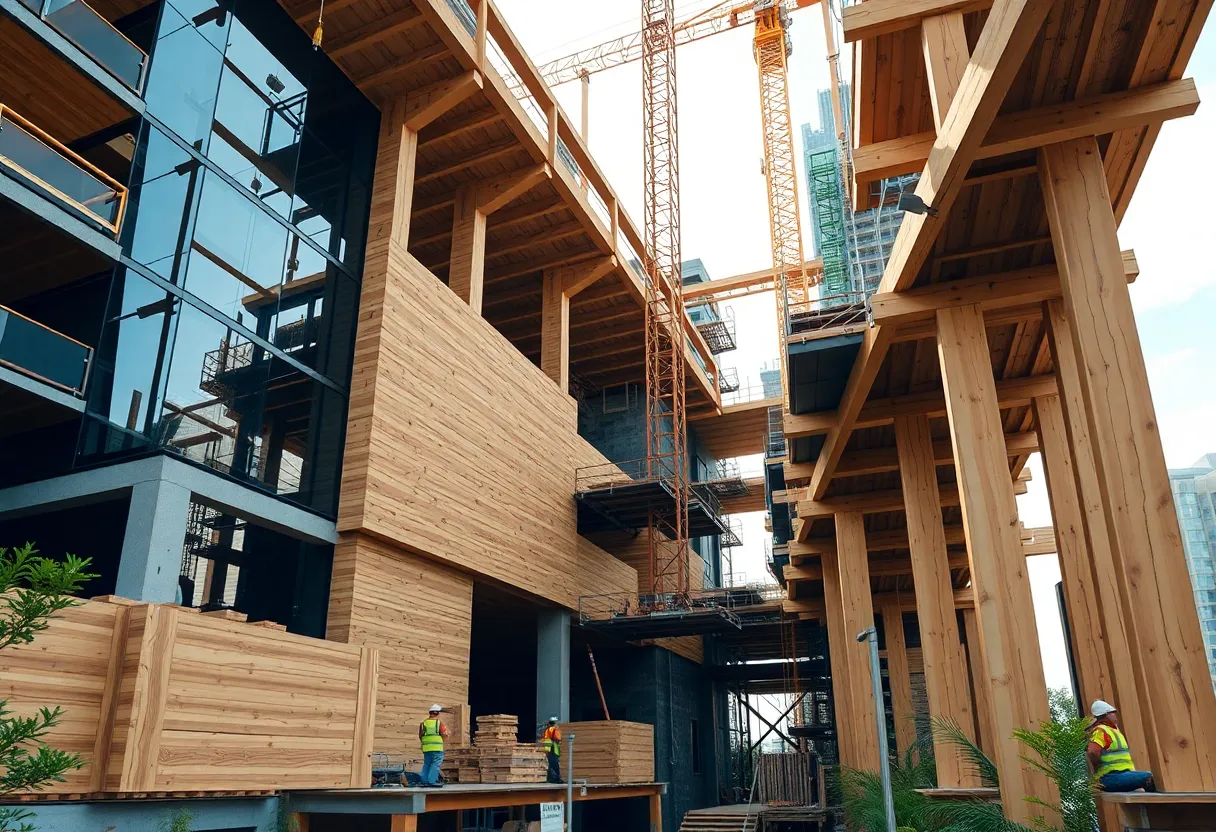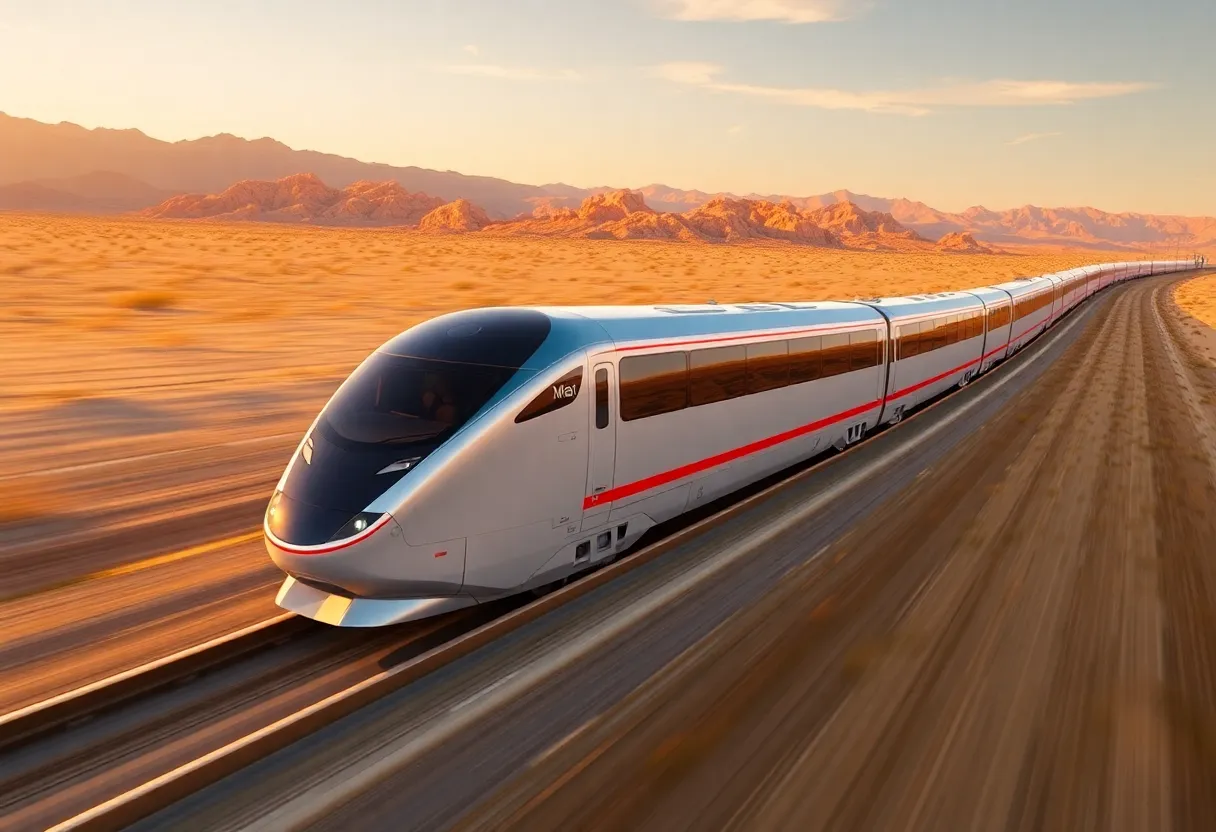Global, September 23, 2025
News Summary
The global timber construction market is projected to more than double as engineered wood adoption accelerates. Future Market Insights forecasts growth from USD 17.7 billion to USD 44.2 billion by 2035 with a 9.6% CAGR, driven by residential demand, CLT, glulam and LVL technologies, and policy shifts toward net-zero buildings. The early phase adds significant value, while 2030–2035 is expected to deliver the largest share of growth. Regional leaders include China, India and parts of Europe. Challenges such as fire safety and code limitations are being addressed through innovation and hybrid construction approaches.
Timber construction market set to more than double by 2035; residential and softwood lead while engineered wood rises
Key takeaways
Global timber construction market projected to grow from USD 17.7 billion in 2025 to USD 44.2 billion by 2035 (Future Market Insights figures). The market is forecast to expand at a 9.6% CAGR between 2025 and 2035, representing an absolute increase of USD 26.54 billion and total growth of 150.1%. The market is expected to grow by nearly 2.5X between 2025 and 2035.
What’s driving the move to timber now
The market’s rise reflects a stronger focus on green architecture and demand for environmentally friendly building materials. Timber’s role in modern architectural design, its carbon-sequestering properties, and the spread of engineered wood products are shaping this shift. Government incentives, updated building codes that favor low-carbon options, and growing green building standards are also accelerating adoption.
Two growth phases: 2025–2030 and 2030–2035
The forecast separates the decade into two phases. In the near term, the market is expected to expand from USD 17.68 billion to USD 27.94 billion (2025–2030), a value increase of USD 10.26 billion that accounts for 38.6% of the total 2025–2035 forecast growth. This phase is shaped by accelerating adoption of mass timber technologies, government support for green architecture initiatives, and recognition of timber’s carbon sequestration benefits.
The later phase, 2030–2035, is forecast to see the market grow from USD 27.9 billion to USD 44.2 billion, a value increase of USD 16.7 billion that makes up 61.4% of the 2025–2035 expansion. This period is expected to be driven by the widespread adoption of engineered wood products, advances in timber construction technologies, and the development of high-rise timber buildings aligned with net-zero carbon and circular economy goals.
Market mix and segments
The residential segment is dominant, projected to account for 61.9% of the timber construction market in 2025, driven by timber frame use in single-family homes, multi-family housing and low-rise residential projects. Softwood is expected to represent 54.7% of timber construction demand in 2025, supported by species such as pine, spruce and fir, along with well-established supply chains and forest management practices.
Engineered wood products—including cross-laminated timber (CLT), glued laminated timber (glulam) and laminated veneer lumber (LVL)—are expanding structural capabilities and enabling larger, taller, and more complex timber buildings. Engineered wood is identified as a major growth area and is expected to gain market share over the forecast window.
Geography and country-level growth
Country growth CAGRs through 2035 cited include: China leading at 13% CAGR; India 12%; Germany 11%; France 10%; UK 9.1%. Separate figures note: Revenue from timber construction in China projected CAGR 12.96% through 2035; Revenue from timber construction in India projected CAGR 12.0%; Demand in USA projected CAGR 8.2%; Revenue from timber construction in Germany projected CAGR 11.04% through 2035; Revenue from timber construction in the UK projected CAGR 9.1% through 2035; Revenue from timber construction in France projected CAGR 10% through 2035.
Industry structure, players and trends
The market is described as moderately concentrated with established players and emerging innovators. Major producers and technology providers are expanding production capacity, forming partnerships, and investing in engineered wood and offsite manufacturing. Key market positioning factors are product innovation, technical expertise, and project execution skills.
Challenges and innovation
Challenges remain, including concerns about fire safety, durability perceptions, and building code limitations in some regions. In response, innovations include timber engineering advances, fire-resistant treatments, hybrid systems combining timber with steel or concrete, improved connection systems, prefabrication methods and digital design tools.
Practical examples of timber projects and methods
Recent projects and approaches illustrate trends: modular wooden blocks made from recycled material are being used in public housing schemes and scaled toward automated production; joinery-based, glue-free prototypes allow dismantling and reuse; and multi-level timber parking structures and mixed-material builds demonstrate hybrid approaches combining stability and design flexibility.
Frequently Asked Questions
Q: What is the overall market forecast for timber construction?
A: Global timber construction market projected to grow from USD 17.7 billion in 2025 to USD 44.2 billion by 2035 (Future Market Insights figures). Expected CAGR 9.6% between 2025 and 2035.
Q: How much will the market increase in value from 2025 to 2035?
A: Absolute increase projected (2025–2035, FMI): USD 26.54 billion. Total growth projected (2025–2035, FMI): 150.1%.
Q: Which part of the market is largest in 2025?
A: Residential segment projected to account for 61.9% of the timber construction market in 2025 (FMI). Softwood projected to represent 54.7% of timber construction demand in 2025 (FMI).
Q: What drives growth in the 2025–2030 phase?
A: The 2025–2030 growth phase is shaped by accelerating adoption of mass timber technologies, government support for green architecture initiatives, recognition of timber’s carbon sequestration benefits (FMI). The market projected to expand from USD 17.68 billion to USD 27.94 billion (2025–2030) with a value increase of USD 10.26 billion accounting for 38.6% of the total 2025–2035 forecast growth (FMI).
Q: What defines the 2030–2035 phase?
A: The 2030–2035 phase is characterized by widespread adoption of engineered wood products, advancement in timber construction technologies, and development of high-rise timber buildings (FMI). The market forecast to grow from USD 27.9 billion to USD 44.2 billion with a value increase of USD 16.7 billion, constituting 61.4% of the 2025–2035 expansion (FMI).
{
“@context”: “https://schema.org”,
“@type”: “FAQPage”,
“mainEntity”: [
{
“@type”: “Question”,
“name”: “What is the overall market forecast for timber construction?”,
“acceptedAnswer”: {
“@type”: “Answer”,
“text”: “Global timber construction market projected to grow from USD 17.7 billion in 2025 to USD 44.2 billion by 2035 (Future Market Insights figures). Expected CAGR 9.6% between 2025 and 2035.”
}
},
{
“@type”: “Question”,
“name”: “How much will the market increase in value from 2025 to 2035?”,
“acceptedAnswer”: {
“@type”: “Answer”,
“text”: “Absolute increase projected (2025–2035, FMI): USD 26.54 billion. Total growth projected (2025–2035, FMI): 150.1%.”
}
},
{
“@type”: “Question”,
“name”: “Which part of the market is largest in 2025?”,
“acceptedAnswer”: {
“@type”: “Answer”,
“text”: “Residential segment projected to account for 61.9% of the timber construction market in 2025 (FMI). Softwood projected to represent 54.7% of timber construction demand in 2025 (FMI).”
}
},
{
“@type”: “Question”,
“name”: “What drives growth in the 2025–2030 phase?”,
“acceptedAnswer”: {
“@type”: “Answer”,
“text”: “The 2025–2030 growth phase is shaped by accelerating adoption of mass timber technologies, government support for green architecture initiatives, recognition of timber’s carbon sequestration benefits (FMI). The market projected to expand from USD 17.68 billion to USD 27.94 billion (2025–2030) with a value increase of USD 10.26 billion accounting for 38.6% of the total 2025–2035 forecast growth (FMI).”
}
},
{
“@type”: “Question”,
“name”: “What defines the 2030–2035 phase?”,
“acceptedAnswer”: {
“@type”: “Answer”,
“text”: “The 2030–2035 phase is characterized by widespread adoption of engineered wood products, advancement in timber construction technologies, and development of high-rise timber buildings (FMI). The market forecast to grow from USD 27.9 billion to USD 44.2 billion with a value increase of USD 16.7 billion, constituting 61.4% of the 2025–2035 expansion (FMI).”
}
}
]
}
Table: Key features at a glance
| Feature | Detail |
|---|---|
| 2025 market value | USD 17.7 billion (FMI) |
| 2035 market value | USD 44.2 billion (FMI) |
| Forecast CAGR | 9.6% between 2025 and 2035 |
| Absolute increase (2025–2035) | USD 26.54 billion |
| 2025–2030 change | USD 17.68 billion to USD 27.94 billion; increase USD 10.26 billion (38.6% of decade growth) |
| 2030–2035 change | USD 27.9 billion to USD 44.2 billion; increase USD 16.7 billion (61.4% of decade growth) |
| 2025 residential share | 61.9% (FMI) |
| 2025 softwood share | 54.7% (FMI) |
| Noted country CAGRs through 2035 | China 13%; India 12%; Germany 11%; France 10%; UK 9.1% |
| Examples of engineered products | CLT, glulam, LVL |
Deeper Dive: News & Info About This Topic
Additional Resources
- Grand View Research: Timber Construction Market Report
- Wikipedia: Timber framing
- Interior Daily: Prefabricated timber homes see record approvals in Germany
- Google Scholar: prefabricated timber homes Germany
- designboom: Dismantlable wooden residence modular prototype (Germany)
- Google Search: dismantlable wooden residence modular prototype Germany
- DataCenterDynamics: Yorizon and Hochtief break ground on timber edge data center (Bad Lippspringe)
- Encyclopedia Britannica: timber data center
- ArchDaily: Wooden parking garage Wendlingen — Herrmann + Bosch Architekten
- Google News: wooden parking garage Wendlingen
Author: Construction CA News
The CALIFORNIA STAFF WRITER represents the experienced team at constructioncanews.com, your go-to source for actionable local news and information in California and beyond. Specializing in "news you can use," we cover essential topics like product reviews for personal and business needs, local business directories, politics, real estate trends, neighborhood insights, and state news affecting the area—with deep expertise drawn from years of dedicated reporting and strong community input, including local press releases and business updates. We deliver top reporting on high-value events such as the Rose Parade, Coachella, Comic-Con, and the California State Fair. Our coverage extends to key organizations like the California Building Industry Association and Associated General Contractors of California, plus leading businesses in technology and entertainment that power the local economy such as Apple and Alphabet. As part of the broader network, including constructionnynews.com, constructiontxnews.com, and constructionflnews.com, we provide comprehensive, credible insights into the dynamic landscape across multiple states.




